Maven Optics is a “Direct-to-Consumer” company, meaning the customer doesn’t pay retail markup prices because they eliminate the middle-man. Their product line includes high-end binoculars and spotting scopes and they now have a new offering for the riflescope market.
The Maven RS.1 is a First Focal Plane hunting optic with a 30mm body tube, etched glass reticle, side parallax adjustment, and magnification range of 2.5X to 15X. Weighing in at just over a pound-and-a-half, It is a few ounces lighter than similar first-focal plane optics in the same general price range.
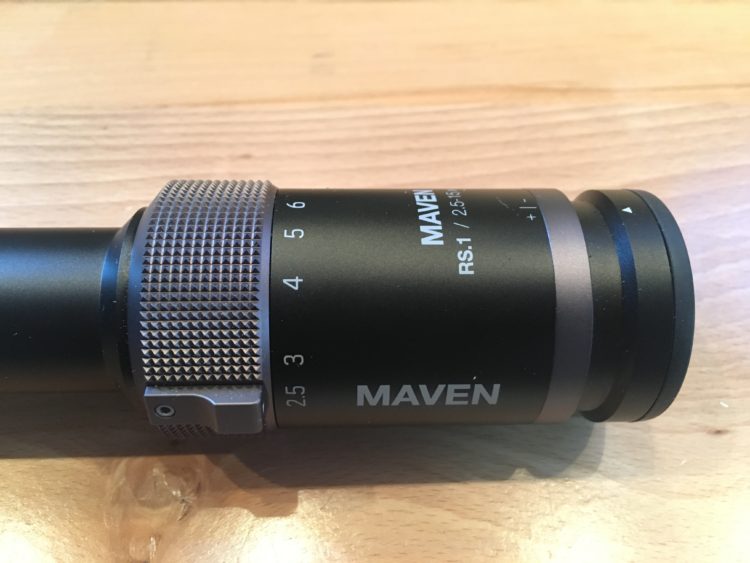
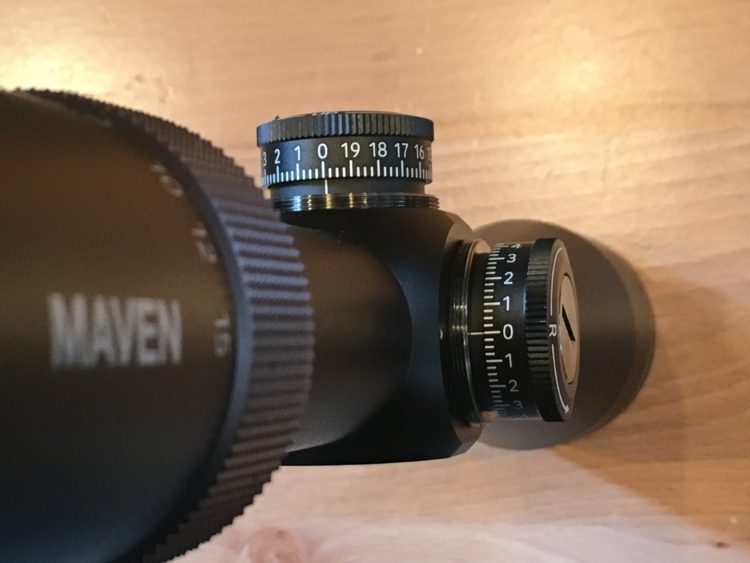
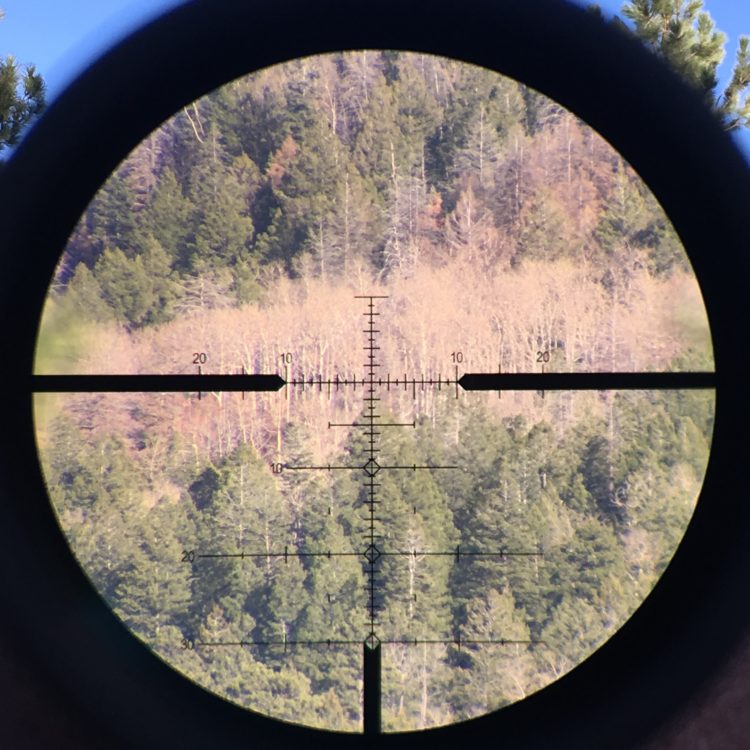
The two available reticles are minute-of-angle based, their MOA reticle with 1 MOA minor hashmarks, 2 MOA intermediate, and 5 MOA major stadia which would be a very capable reticle for range estimation, and their stripped down SHR (Simplified Hunters Reticle) which gives stadia lines for drop in 5 MOA increments. The reticle and ¼ MOA click knobs are calibrated in honest-to-goodness minutes of angle (1/60th of one degree or approximately 1.047” @ 100yds), not “shooter’s MOA” (1” at 100yd). Field of view is a pinch less than some similarly-priced optics, but the ability to dial down to 2.5X compensates for that. These optics are not currently offered with illuminated reticles, which I would personally like to see, although most manufacturers make the reticles too bright for serious low-light use anyway. For a dusk to dawn hunting optic, maybe illumination isn’t really a critical feature, and would add expense and complexity.
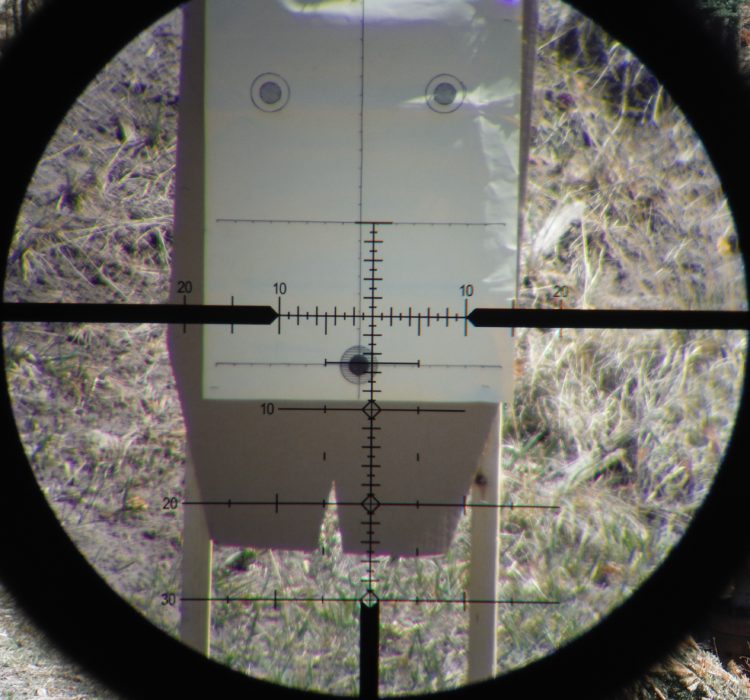
I originally mounted this optic on a Savage .308 for testing, but my first attempt at ladder and box testing didn’t go so well. Between 20-30mph gusts and a very crowded range resulted in so many stray impacts on my target it was indecipherable. I decided I needed to try something a little different the next time.
I have a precision rimfire rifle that this scope looks really good on and there’s no rule that says you can’t do effective ladder and box testing at 50 yards. So, on a bright, clear day with temperatures in the mid-50’s and variable winds in the mountains of Northern New Mexico when I conducted my second test attempt. This time, I had much more reliable results.
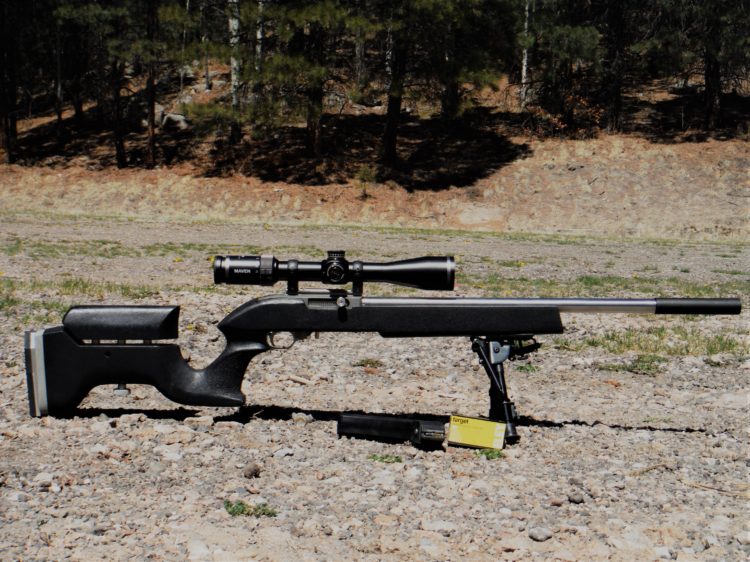
For the box and ladder testing, the point of aim for every round was the large bull at the bottom of the target, and the point of impact was worked up, down, left, and right by adjusting the windage and elevation knobs. My ladder test consisted of a series of 4MOA upward adjustments with 2 rounds each for a total of 36 MOA, followed by 1 round each on the way back down. All rounds struck within ½-inch (1 MOA @ 50yd) of predicted point of impact.
For the box test, I started back at the bottom bull, then worked left in 4 MOA increments, then up 15 MOA, right a total of 24 MOA, then back to center. Things got a little loose as I was working my way right, but the 4 rounds that struck outside of the spec could be chalked up to variability in ammo or the weather…or more than likely the result of a “loose trigger nut.”

Results of this testing confirmed very predictable tracking both horizontally and vertically for the Maven RS.1. I had some ammo left over and an unmolested bull in the upper right of the target, so I cranked the magnification down to 2.5X and fired 15 rounds into a 3/4-inch group with no appreciable change in zero.
If you are familiar and comfortable with the MOA unit of angular measure, and you are looking for a first-focal plane hunting optic with predictable, measurable subtensions, I think this scope is a winner.
I also have to say that, while Maven designed the RS.1 primarily as a hunting optic, I also really like it as a precision rimfire optic and I’m thinking this would be a great scope for Rimfire-PRS type matches, intermediate-range pest control, or long-range plinking.
Material Disclosure
I received this product as a courtesy from the manufacturer via Spotter Up so I could test it and give my honest feedback. I am not bound by any written, verbal, or implied contract to give this product a good review. All opinions are my own and are based off my personal experience with the product.
*The views and opinions expressed on this website are solely those of the original authors and contributors. These views and opinions do not necessarily represent those of Spotter Up Magazine, the administrative staff, and/or any/all contributors to this site.

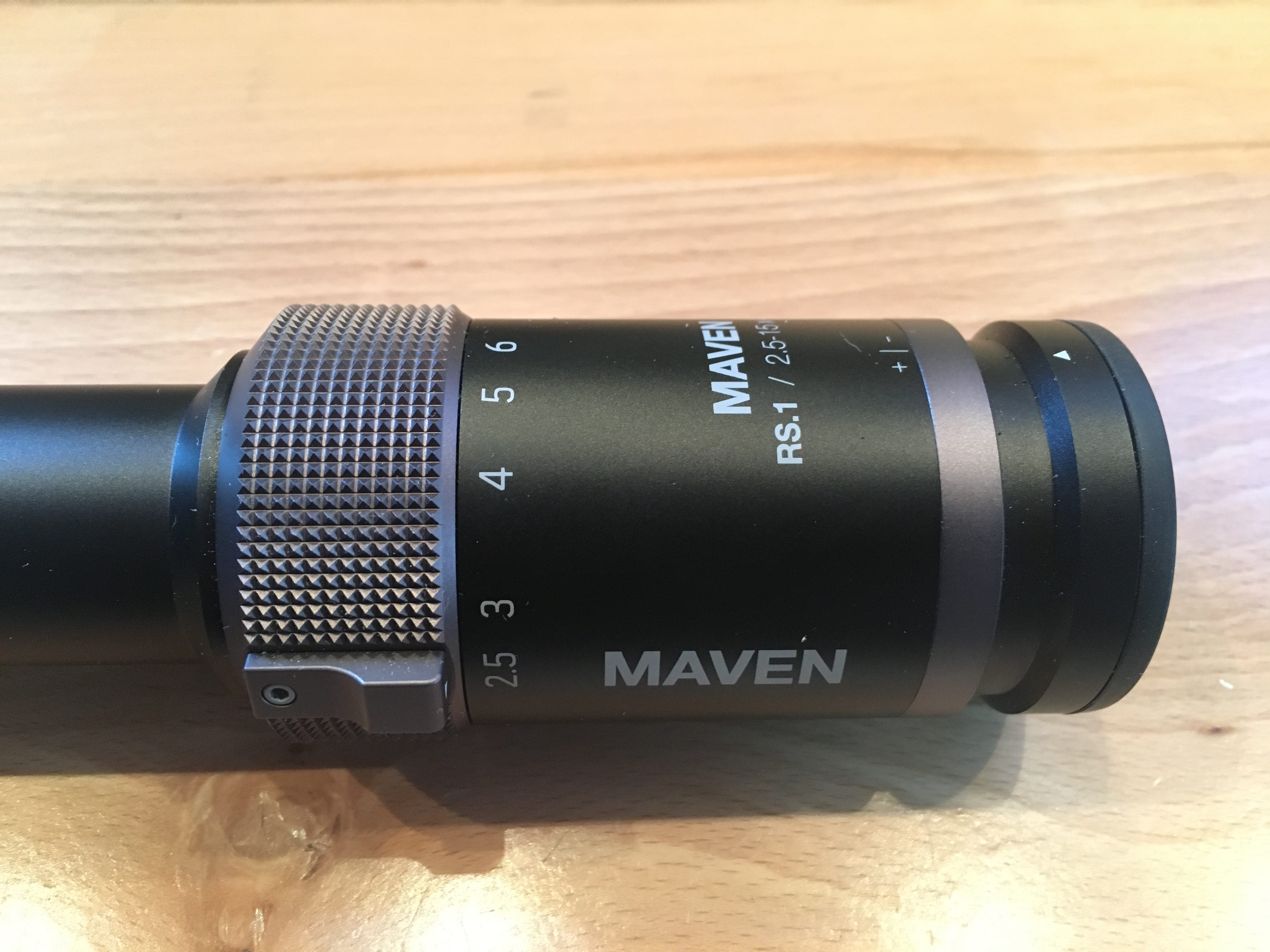
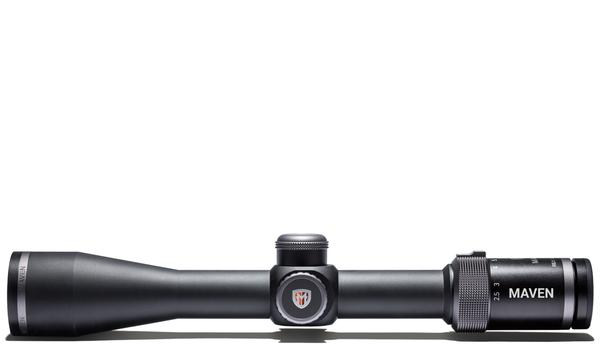
[…] AmericanHunter SpotterUp […]